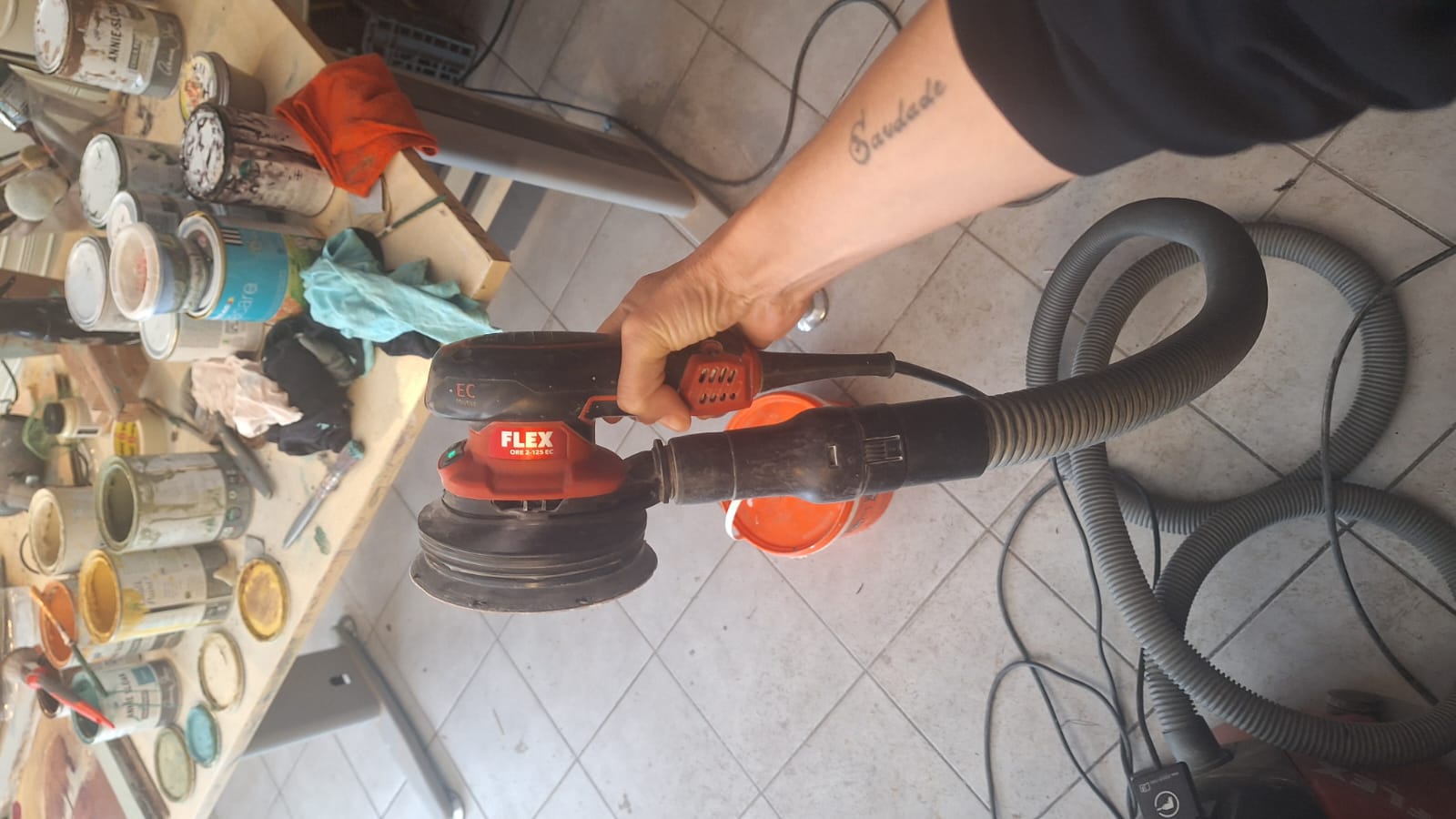
I never thought I’d fall for furniture restoration. I’m not talking about a “sip and craft” class fling. A two-hour flirt that you forget all about when you get home. I’m talking about the kind of love that doesn't announce itself, settles in without asking for permission. The type of love that sneaks up on you and quietly decides to stay. You don’t question it.
It doesn’t need to make sense to feel like it was always meant to be there. Like most things that end up meaning the most, it wasn’t planned. It happened suddenly. Serendipitously. In a moment that felt strangely right. So, just like all things “heart”, I followed it.
Randomly browsing “workshops in Rome” and “restoration workshops in Athens”, I landed on a page that belonged to someone named Alexandra. Someone who seemed to understand the quiet language of wood… and people. Something about her words, her aura, her work… it just clicked.
Two weeks later, I stood there with an apron in her Athens workshop, staring at the overwhelming avalanche of tools, feeling entirely at home in my “natural habitat.”
And that’s the thing about unexpected love stories. They don’t always knock. Sometimes they just slip in through a crack you didn’t notice.
Furniture restoration is like love stories.
You start unsure, maybe even hesitant. You invest time, attention, and patience.
It teaches you about care. About commitment. About the beauty of imperfection and the joy of making something whole again. You don’t just restore the wood. You restore the soul.
It teaches you about care.
It teaches you about you.
Before you know it, you're in love, mainly with the process.
And because I’am a sucker for analogies, here’s my two cents on both. Wood, and relationships.
1) Don’t think it will fix itself.
Here is a tiny crack in the frame, which indicates an imbalance. Something squeaks, something leans, and you think, a bit of glue, and it will become sturdy again.
It’s the “I’ll deal with it later”. The good old wishful thinking. Too much reliance on a lucky star. A far-fetched faith in the tooth fairy.
Then later becomes never, and before you know it, the thing’s falling apart in your hands.
No big dramatic break. Just the small stuff you don’t take seriously. The avoidance. The sigh. The fake tooth fairy. The farfetched lucky star. The “I’m fine.” The part where both people stop checking for loose ends. That’s how it goes… slow, quiet, and then all at once.
Bottom line: Clean old glue entirely, and then glue it again.
2) Don’t take it for granted.
Restoration is not glamorous work. It’s not a DIY with a user guide for dummies. Most of the time, you're just… standing there, trying to figure out where to start. You look, tilt your head, touch, and wait.
Sometimes, you don’t even do anything on day one. You sit with the thing. See how it reacts to light. Figure out where it’s been. Care isn’t always loud or visible. It’s not in the tools. It’s in the attention. It’s in the patience you wholeheartedly stretch.
Love is not fireworks and speeches. Sometimes, it’s just being quiet next to someone while they figure out how not to unravel.
The bottom line is always to run your fingers along the grain to check for cracks, scratches, or imperfections.
3) Minimal product, maximal effort.
You don’t paint a table by overloading it with paint. It will run and streak.
You don’t fix a broken chair by drowning it in glue. You fix it by understanding where it cracked. You sand it down, line it up, and press with intention. As Alexandra perfectly put it, “Too much glue is exactly the same as no glue at all.”
More doesn’t always mean better. Sometimes it just means messier. The magic isn’t in the quantity. It’s in the quality of the gesture. The stillness before the action. The pressure at the right point. The hold that doesn’t slip.
You don’t walk into the room shouting your worth. You don’t need bling to prove your presence. You need to know when to listen. When to speak. And when to be still, just enough for someone else’s truth to land.
The difference between “enough” and “too much” isn’t just about the volume. It’s about using every bit with intention and soul.
Forget the noise. Real effort doesn’t scream. It’s measured. Intentional. Precise. It speaks for itself. In presence. It doesn’t demand attention, because it already knows it belongs.






